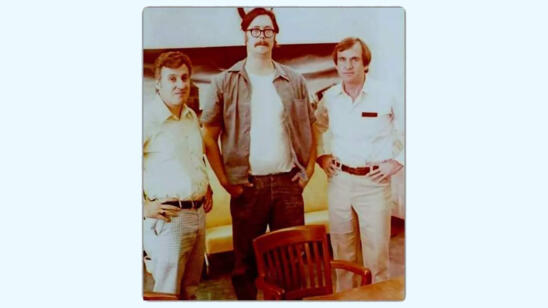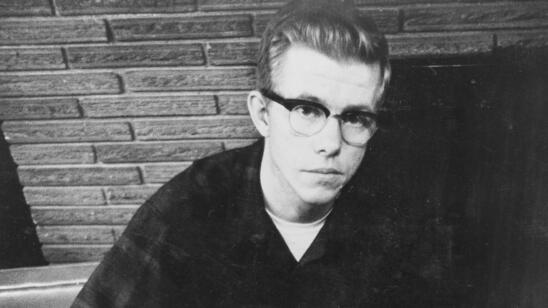In late 1983, legendary FBI criminal profiler John Douglas nearly died of encephalitis while tracking a series of slayings in Seattle.
It took Douglas months to recover from the illness that left him despondent and doubtful about his future with the elite behavioral profiling unit he created. “I was afraid I lost my confidence,” Douglas tells A&E True Crime.
Then, on June 3, 1985, the undersheriff of Lexington County, South Carolina called the bureau, seeking expert help. A brazen criminal had snatched Shari Faye Smith, 17, at gunpoint on May 31, 1985, as she checked the driveway mailbox, two days before her high school graduation.
The abductor kept phoning her family, taunting them about the fate of the lovely blonde who’d dreamed of a singing career, Douglas recounts in his latest book “When a Killer Calls,” coauthored with Mark Olshaker.
Soon, he was in South Carolina investigating Smith’s murder and the related fatal kidnapping of Debra May Helmick. The blonde 9-year-old was grabbed from outside her home on June 14, 1985.
The abductor’s sophisticated and cruel schemes tested all of Douglas’s skills, but the profiler turned those tactics against the killer, even enlisting Shari’s sister in a race to prevent another tragedy.
The profile he developed helped identify Larry Gene Bell—executed in 1996 for both crimes—who Douglas called “one of the most sadistic murderers I’ve come across.” Douglas, who also wrote the classic true crime book “Mindhunter,” spoke with A&E True Crime about the profile he came up with for Bell, the breakthrough in finding him and what made him different than all the other killers he’s investigated.
You listened to police tapes of Bell speaking with Shari Smith’s mother, Hilda, and older sister, Dawn. What could you tell about him?
This was no amateur. He was fairly criminally sophisticated and educated streetwise. You don’t start off with this type of case. You would have a history of other sexual assaults and possibly abduction attempts.
People like this have trouble in interpersonal relationships. They’ll try marriage, but the marriage never works out.
Generally, crimes like this are intra-racial, white on white, for example. [Also], he had some kind of electronic device that enabled him to disguise his voice, indicating a background in electronics.
As far as age, I usually start at age 25 [with this type of violent crime]. Here, we have an abduction at a mailbox in broad daylight on a Friday. That’s pretty risky. So we start adding years. He was 35. We thought somewhere in the early 30s.
Why did you ask Dawn Smith to help with the investigation?
Bell had just stopped communicating, he stopped calling the Smiths, and we needed calls. The more calls we get, the more we can analyze.
What I also saw is the few times he did call and got in touch with Dawn, we could see there was going to be a fixation [on her]. She looked very much like her younger sister, and he could be targeting her.
[Watch Invisible Monsters: Serial Killers in America in the A&E App.]
I told her father, ‘Mr. Smith, I’d like to use Dawn and work with her as a lure to get this guy to keep communicating, and we’ll learn more and more about him.’ He said, ‘is it safe?’
[Editor’s Note: In “When a Killer Calls,” Douglas recalls reassuring both parents that police would protect their oldest daughter. Dawn told him, “I’ll do anything to help catch my sister’s killer.”]
To lure the killer, you planned a graveside memorial for Shari and had police publicize it. Subsequently, Bell called and had a conversation with Dawn that ‘struck terror into all of our hearts,’ according to the book. Can you describe this?
I told Dawn, ‘You’ve got to stall for time.’ She did a great job, but the subject’s [behavior] was very concerning. His focal point was drifting over to Dawn, threatening her: ‘God wants you to join Shari Faye. It’s just a matter of time, this month, next month, this year, next year. You can’t be protected all the time.’
One breakthrough came when crime technicians found a phone number outlined on paper Bell gave Shari Smith to write her last will and testament. What happened when investigators traced the number to Ellis and Sharon Shepherd, who lived about 15 miles from the Smiths?
The undersheriff went out and here’s a middle-aged man and his wife. They don’t fit the profile. He gives them all the characteristics in the profile and asks, ‘Do you know this person?’ They both look at each other, and almost in unison they say, ‘That’s Larry Gene Bell.’
Bell, an electrician’s assistant who both worked and house-sat for the Smiths, was arrested after you and an FBI colleague had a face-to-face interview with him. How did that play out?
The sheriff’s police said [to Bell], ‘Do you know who these boys are? These boys are from the FBI…and Mr. Douglas has a profile that fits you to a T.’ And he’s just looking at me.
I told him, ‘I develop a program on criminal profiling for the FBI. One of the things we’ve found is that the people we talk to–they make it seem dreamlike. They did a crime, but they don’t remember doing it. It’s like two sides to their personality, they have a good side and the bad side.’
Then I asked, ‘When did you start feeling bad about this case?’ He said ‘When I saw the cemetery…I didn’t feel good about it.’
I asked, ‘What about it?’
He said, ‘All I know, is that the good Larry Gene Bell couldn’t have done this, but the bad Larry Gene Bell could have.’
That would be the closest we could get to a confession. I would end up testifying in court because of that.
You’ve interviewed and investigated multiple murderers. What was different about Larry Gene Bell?
We’ve had cases like the Zodiac Killer, who would communicate with the police—but not with families, nothing like this. He was sadistic, not only to the victims, but to surviving victims, the mother, the father, the daughter. I hope I never see another one like that again.
[From my perspective,] the death penalty was justified with him. I was surprised, he had a choice how he could die and he took the worst one, the electric chair. He could have taken the needle.
Bell lived a life of hell in prison. So, at the end, rather than go the easy way, he chose electrocution. It was probably his way of showing what a tough guy [he thought] he was.
Related Features:
FBI Profiler John Douglas on the Racist Rampage of Joseph Paul Franklin
How to Talk to Serial Killers: An Interview with ‘Mindhunter’ John Douglas
Robert Hansen, the ‘Butcher Baker’ Serial Killer Who Hunted His Victims Like Animals in the Wild


